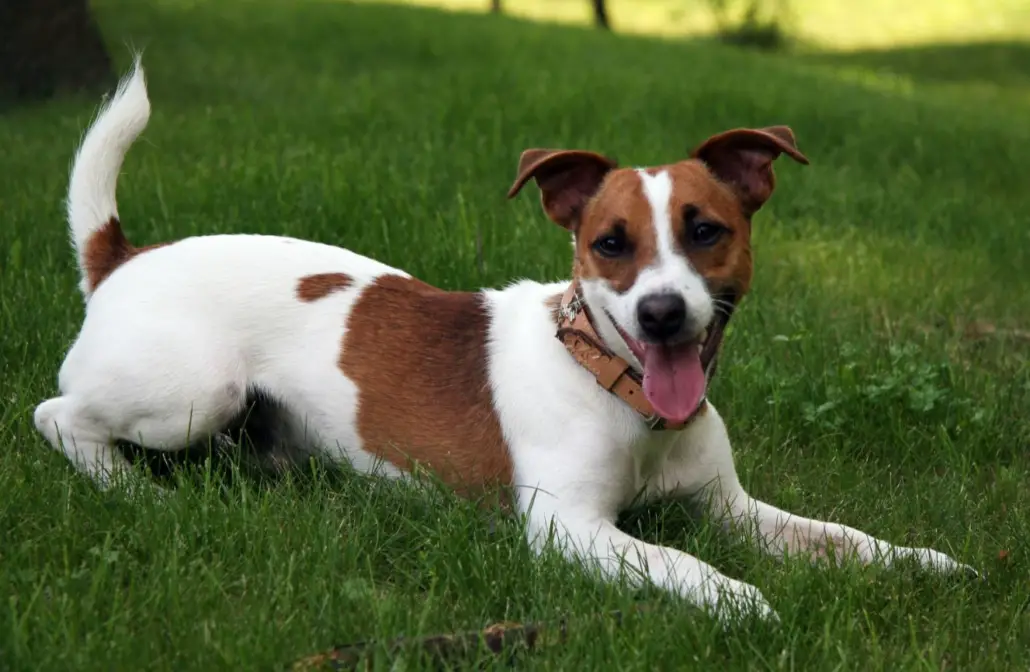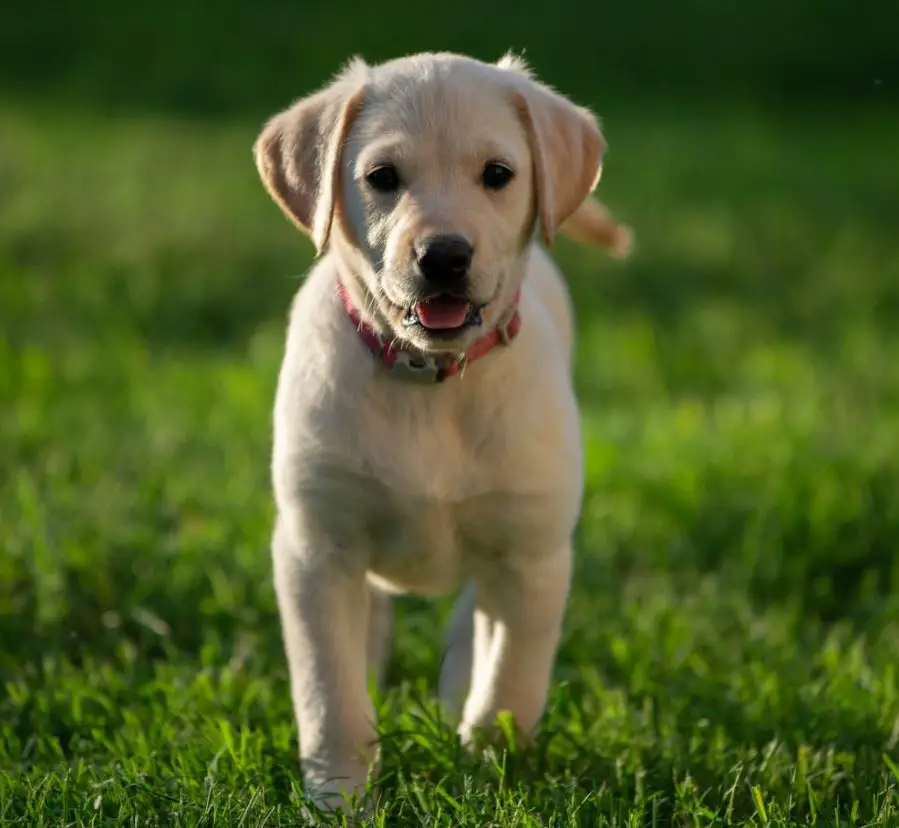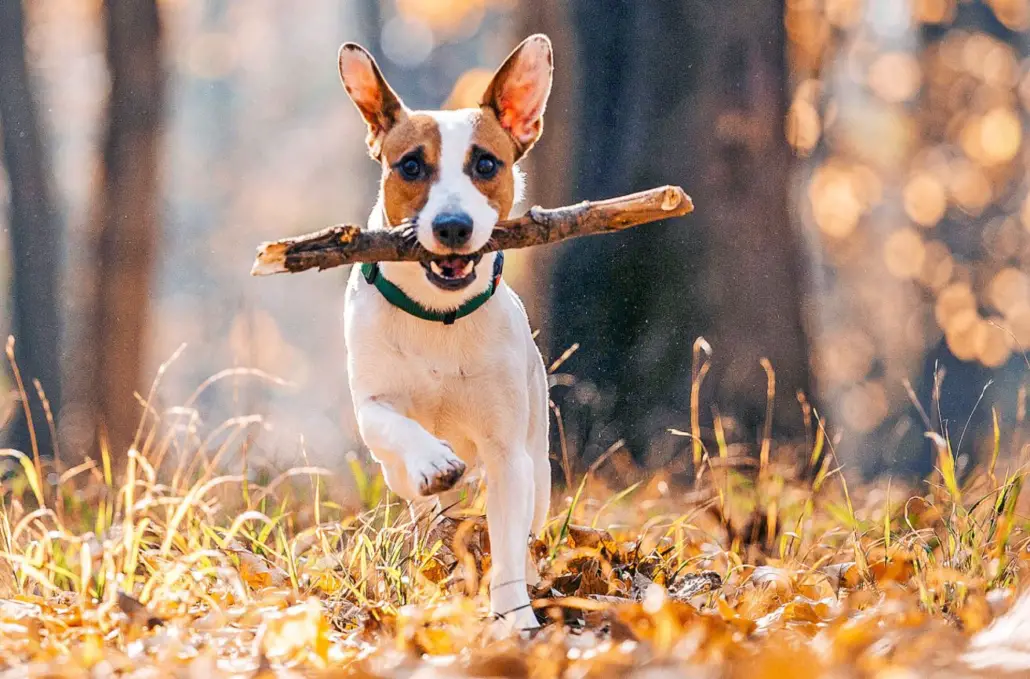Jack Russell vs. Labrador – What Is The Best Breed For You

These dogs vary in both size and temperament but do love their family. Each of them has both good and not so good qualities. Hopefully, this article will help you decide which one is for you.
Key Similarities
Jack Russell and the Labrador are purebreds and recognized by the American Kennel Club.
Obtaining either one of these breeds is reasonably easy, but you should buy them from a reputable breeder.
Both dogs are relatively easy to groom with an occasional trip to the groomers.
Key Differences
One main difference between the breeds is the size and weight. A Jack Russell is between 8 to 15 inches and weighs about 14.5 pounds. A Labrador is between 24 and 26 inches and weighs between 55 and 70 pounds.
The coats are different as well, with the Jack Russell short rough coat and the Retriever coat being dense and waterproof.
The Jack Russell sheds very heavily while the Retriever is a moderate shedder.
Pros of Owning a Jack Russell
If you are an active person who likes the outdoors, then a Jack Russell may be the dog for you. This dog will let nothing escape his attention and knows everything going on in his environment.
A Jack Russell makes a good watchdog but is still social with strangers. He is the most intelligent and trainable of all the terriers when trained correctly.
Pros of Owning a Labrador
These dogs love to retrieve things and will fetch about anything you throw. A Labrador is a good family dog and is good with other dogs, children, and pets.
They are naturally exuberant and will greet you to the point of knocking you over if not appropriately trained.
These dogs are protective of their homes but will give a happy sloppy greeting to the company.

All About the Jack Russell

History
The Jack Russell terrier has been bred for hunting since the early 1880s. He is a baying terrier which means his bay is to flush out a fox but not kill it. The breed acquired their name from the Reverend John Russell. The Reverend bred the finest working terriers for chasing down foxes in England.
There are two types of Jack Russell terriers. The longer-legged dogs are called Parson Jack Russell terriers, and the shorter-legged dogs are just called Jack Russell terriers.
Size & Appearance
These are fairly small dogs between 13 and 17 pounds, with an average weight of about 14 ½ pounds. The male is 14 inches at the withers, and the female is 13 inches at the withers. The breed has a compact and muscular body.
The coat is a short, double coat that is flat and hard. The colors are white with black markings, tan markings, or all white. All the coats tend to shed.
Lifespan
The life span of a Jack Russell terrier is between 13 to 16 years.
Guard dog or Family
A Jack Russell is a family dog, but he will also guard his family. They are good watchdogs and will protect his family. But if there is a strange dog around and it minds its manners, your Jack Russell will mind his. But if your dog thinks the other dog is a danger, a Jack Russell is so fearless he will even take on a Rottweiler if your dog doesn’t like the attitude of the other dog.
Training & obedience
A Jack Russell has a high prey drive, and you can’t eliminate it in training. They are highly intelligent dogs and will learn almost anything you want to teach them quickly. But the most challenging part of training is convincing your dog that he has to listen to you, even if he’s not in the mood to do so.
If you offer the right mixture of mental stimulation, physical exercise, and confident leadership, then your dog may oblige you. Of course, physical punishment won’t work on these dogs, but the reward method of training will.

Shedding, grooming, and maintenance
This dog sheds continuously and year-round. They are to be bathed about every 4-6 weeks and taken to the groomer occasionally for cutting nails.
Brushing daily will help to keep ahead of the dog hair issue.
Health issues
Your Jack Russell can develop eye and heart disease, Neurological/neuromuscular diseases, Inherited deafness, Orthopedic diseases, and Miscellaneous health problems.
This is why it’s essential to check the health records of both parents before purchasing your dog. A professional breeder will have the medical records on hand.
All About the Labrador

History
In the 1800s, some multipurpose dogs used by hunters in North America were shipped to England. Some of the dogs were Newfoundland types, and smaller ones were called St. John’s dogs.
In England, the breed was refined and developed into the Labrador recognized today.
Size & appearance
These are not small dogs. A Labrador Retriever will weigh between 55 and 80 pounds, with the male being 23 inches at the withers and the female being 22 inches.
The Labrador is a solid, sturdy dog with a strong body and sturdy legs. They are listed in the medium dog category, but this breed looks larger because of the sturdy build. A field line-bred dog is a little thinner in body and a bit taller.
Your Lab’s head is broad, with large expressive eyes and hanging ears. His tail is thick and sturdy and can clear off an inn table in seconds. The feet of a Labrador are webbed with more extended skin between his toes to aid in swimming.
A Labrador will reach his adult height within six to twelve months. But he won’t completely fill out until he’s two. Plus, he will still have a puppy attitude until he’s almost three.
Lifespan
The life span is between 12 to 14 years.
Guard dog or Family
Labradors will protect their families, giving an alert bark when someone is at the door. But in the same respect, they can knock the person down with their enthusiastic greeting at the door.
Training & behavior
Your dog is intelligent and will train reasonably quickly because he loves working with his owner. However, these dogs are easy keepers and can become overweight if not kept on a diet.
Labradors don’t like an irregular daily routine, a household that’s noisy all the time, or frequent guest visits. As a result, they are a bit more sensitive to their surroundings than other dog breeds.
The reward training method works best with this breed.

Shedding, grooming, and maintenance
Your Retriever has a short, dense coat that doesn’t get matted or tangled. You actually only have to bathe your dog a couple times of the year. But this breed does enjoy rolling around in the mud, plunging into any water he can find, and getting into questionable messes. When this happens, you will want to bathe him.
These dogs are notorious for shedding everywhere because of their double coat. Therefore, you will need to brush your dog daily, or you will be vacuuming every day. Plus, when you brush your dog every day, it helps spread the natural oils through his coat, leaving a healthy shine.
Health issues
One of a Labrador’s health problems is their ears. Because the ears hang, ear infections can be a problem. So you need to clean and inspect his ears regularly. Especially after a romp through the woods or having been in the water.
If you notice dirt in his ears, they need to be cleaned. Take a cotton ball wetted with a dog cleaning ear solution. Gently wipe the ear part you can see, don’t go into the ear canal. If you see there’s a build-up in his ear, then you should consult your vet.
Labrador Retrievers can have other health issues: Hip Dysplasia, Laryngeal Paralysis, Arthritis, Hypothyroidism, Elbow Dysplasia, Seizures, and Cancer. This is why it’s essential to check the health certificates of both parents when purchasing your dog from a breeder.
What About?

Temperament & behavior
This is a happy, energetic dog as he has a strong desire to work. He’s happiest when he has a job to do and companionship. Digging is a normal part of this breed’s makeup, and his hunting instinct is strong. You will never overpower his hunting and need to dig instinct.
Because the breed is a baying terrier, your dog will love the sound of his own voice. A Jack Russell is an assertive breed and may not tolerate other animals or children in the home. He will pursue cats and small pet rodents.
These dogs are not suited for apartment living or living with an owner who works a lot. If your dog has too little companionship or mental stimulation, then his behavior will turn destructive.
Plus, if you keep two Jack Russell’s, they should never be left alone together. Something as innocent as the ownership of a chew toy can flare into deadly combat.
Exercise needs
A Jack Russell needs a lot of exercise, and a fenced-in yard is perfect for them. Because the hunting instinct is so strong, your dog will wander off the first chance he gets. He will literally follow his nose and can end up in trouble.
These dogs enjoy long walks and a rousing game of fetch. If you plan on sitting on the couch all day, this isn’t the breed for you. Your Jack Russell will need vigorous daily play sessions. Play chasing a ball will be one of his favorite sports.
Quick facts
- Jack Russell terriers are better in an only pet household. They don’t get along well with smaller animals and challenge other dogs.
- Jack Russell is one of the most intense, determined, and energetic of all dog breeds.
- They love to bark at anyone or anything that they consider an intruder on their turf.
What About?

Temperament & Behaviour
These are great family dogs who do well when their exercise needs are met. Because these dogs are working dogs, they love to have a job to do. Throwing balls or toys and having your dog retrieve them back to you is one way to get the needed exercise.
This is a natural exuberant breed of dog good with children and other pets. However, they are physically strong dogs. Unless appropriately trained, you will find yourself being drug down the street when taking your dog for a walk.
Chewing can be an issue because the retrieving urge gives these dogs a chewing fixation. Training, exercise, and sturdy chew toys will help combat this behavior.
Exercise Needs
These dogs need a lot of exercise, or they will turn into a couch potato. Labradors need to be walked for about 40 to 60 minutes a day plus yard time.
Quick facts
- Labs will tend to “mouth” people, and the quickest solution is to put something in his mouth to carry around.
- These dogs have a strong attraction to water. They will jump into pools, ponds, or puddles. Wherever there is water, that is where they will be.
- This breed isn’t barkers, but they will alert you if someone is at the door.
Conclusion

A Jack Russell terrier is an active, highly intelligent dog. They are high-energy and not for someone who likes to sit around. This dog will keep you moving. A Labrador Retriever is more of a family dog and will interact well with people and other animals.
Whichever breed you decide to choose, the decision comes down to you.


